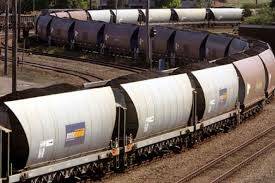
AN XPT train travelling at 118 kph came within 80 metres of hitting five train passengers and rail staff walking on a railway track north of Paterson in a near-tragedy caused by rail staff “misunderstandings”, an investigation has found.
Subscribe now for unlimited access.
$0/
(min cost $0)
or signup to continue reading
The guard of a two-car train from Dungog “looked up the track to see the train coming towards them”, an Australian Transport Safety Bureau report said of the May 22, 2014 incident that started with a disabled coal train and ended with an investigation into how the Dungog train passengers were directed to walk on the track.
The bureau report, released on Wednesday, found the train crew “detrained” the passengers without following Australian Rail Track Corporation procedures; key Sydney Trains and NSW Trains staff continued to operate under RailCorp legacy systems nearly one year after major systems changes, and communications between key people on the day led to “misunderstandings” that threatened the safety of the passengers.
Five of the six Dungog train passengers left the train at Kilbride north of Paterson at 11.25am after the train guard advised a disabled coal train was blocking the Newcastle line ahead of them and they would have to walk the track to Mirari road level crossing where a small bus was waiting.
The bureau found the guard was unaware the Pacific National coal train bound for Newcastle, that blocked the track near Paterson from 10.10am because of a mechanical failure, had been repaired enough to leave the line only minutes before the Dungog train passengers were directed to walk on the track.
The guard was also unaware a Taree-bound XPT train blocked by the coal train was also cleared to resume its journey at 11.20am and a few minutes later the XPT driver “observed a bus at the Mirari level crossing and people walking on the track approximately 300 m ahead of the train”.
Train guard "looked up the track to see the train coming towards them".
- Australian Transport Safety Bureau report of Paterson rail incident.
The driver “immediately made an emergency brake application and sounded the horn continuously as he brought the train to a standstill approximately 80 m short of the bus and people”.
The bureau found the guard “observed the level crossing activate” and looked up the track as the XPT approached. He “gave a verbal warning to the passengers to get off the track”, the report said.
A lengthy investigation found that “all safe working communications” to ensure the safety of passengers and crew “should have occurred between the ARTC and the Dungog train driver”. But the only evidence of a conversation between the driver and the relevant ARTC controller showed the call was confined to a question from the driver about how long the train would be delayed.
The Dungog train crew “did not comply with the ARTC network rules when detraining passengers from their train and unknowingly placed the passengers in the path of” the XPT, the investigation found.
During interviews the driver, the guard and other ARTC and Sydney-based rail personnel demonstrated “confusion among the involved parties about their individual roles, level of responsibility and limits of authority with regards to ensuring passengers were detrained only when it was safe to do so”.
The report found the transition from RailCorp and its CountryLink division, to Sydney Trains and NSW Trains in July, 2013, contributed to the confusion because key operational staff in NSW Trains and Sydney Trains continued to operate under RailCorp legacy systems, “even though documented transitional arrangements had re-established lines of responsibility and authority”.
The report found NSW Trains needed to report the incident to a specified senior ARTC controller “the moment the decision was made to put people into the rail corridor”, the report found.
The bureau found the decision to direct rail passengers off a train when not at a platform “should only be considered once all other options have been exhausted or no other option exists”.
“There was a train platform at Hilldale approximately 2.9 km north of Kilbride that would have enabled the passengers to safely alight and wait for either another train or transfer from the platform to a bus,” the report found.
“This incident illustrates the importance for train crews to strictly adhere to recognised detraining and track protection procedures when transferring passengers from a stranded train to a safe place,” the report found.

